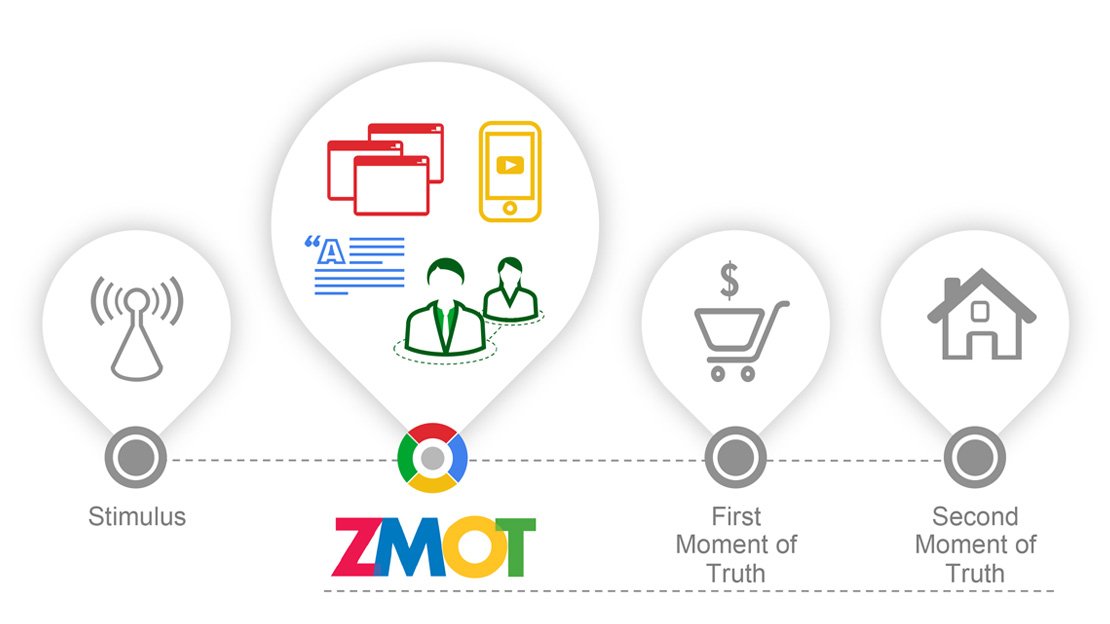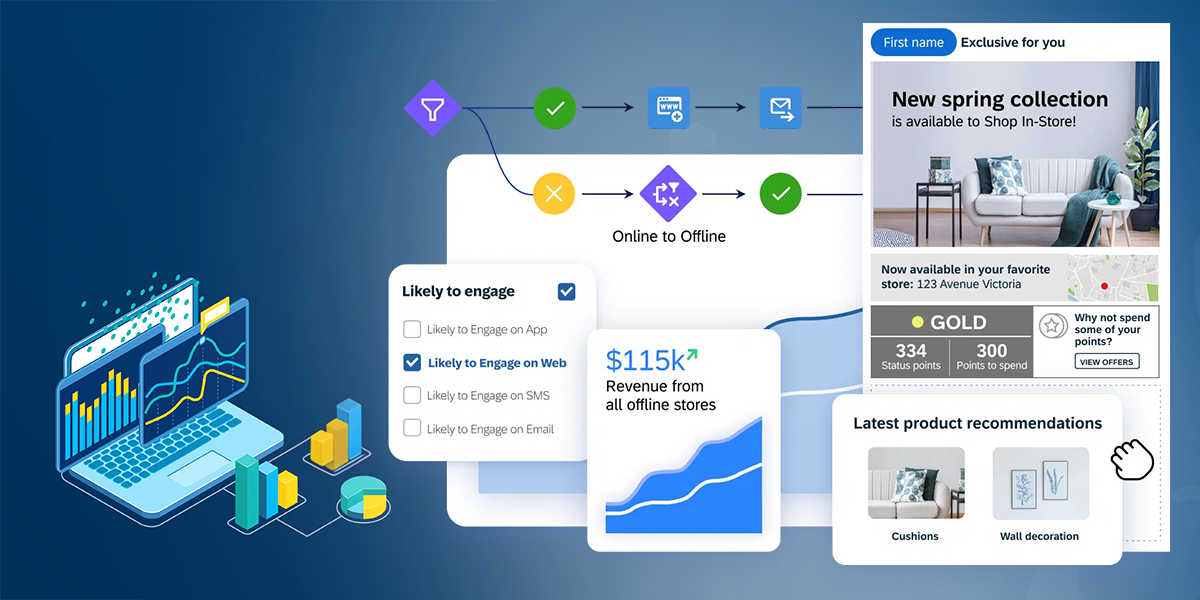How many bad sales reps can your company afford?

Hyperconnected, informed customers are not something that just emerged yesterday. Ever since 2011, when Google published the results of its ZMOT (Zero Moment of Truth) empirical study, we’ve found that a growing part of the customer journey is made by consumers and business customers themselves, without contact with the seller. The Internet and social networks are the most accessible and simultaneously richest sources of information for people in the purchase decision process. This is where customers obtain the information that most crucially influences their purchase decisions. The fact is that modern consumers bypass the sales rep when informing and educating themselves. Sales reps have become more like sales closers and are no longer a source of knowledge in the customers’ eyes.
There are no longer ignorant customers. There are only ignorant sellers.
The key educational role has shifted from sales to marketing. Marketing provides the content that customers look for on their customer journeys. But marketing should also be responsible for managing the technologies that allow individual customers to be tracked along their journeys. This is the only way we can have information about their purchase readiness. We need this so that sales reps know how to get involved in the right context and at the right time by closing the sale. We also need it because only with the help of technology do we know how to provide an individual in the digital environment with relevant content at the right moments. Depending on the customers’ level of awareness or purchase readiness, if you will, this technology seeks out different content. The web can no longer be static and communication in the digital environment must be tailored to each individual—in terms of content and preferred communication channel.

The essence of ZMOT is the realization that the sales rep’s role has changed dramatically in today’s “always-connected” and “mobile-first” world.
The basics haven’t changed; Philip Kotler’s still relevant.
Even though customers have changed their shopping habits, going through an ever-greater portion of the customer journey on their own, making decisions based mainly on information available to them in digital environments, the basics remain unchanged. Those famous P’s are unavoidable. Even when we want to build a digital marketing machine—or growth engine, as younger colleagues like to call it today—first we must define:
- The product,
- Its target groups,
- The purchase decision stakeholders within each of the target groups,
- The unique value of the product for each target group or the purchase decision stakeholder within the target group.
Modern consumers bypass the sales rep when informing and educating themselves. Sales reps have been reduced to sales closers.
Only after we’ve done our homework can we honestly immerse ourselves and delve into the purchase decision process of each target group and the actions of its purchase decision stakeholders. This is the basis for trying to define the journey that a typical customer is expected to take, or all those involved in making a purchase decision. Yes, also in B2C business, not just in B2B. When I buy a new car, it’s not just the horsepower, fuel efficiency, automatic transmission, and brand that matter. To me, yes. But to my wife, the size of the glove compartment, the light over the visor mirror, the color of the car, and the adjustment of the seat and mirrors at the touch of a button count significantly more. My children, for example, look for displays on the backs of the driver’s and passenger’s seat head rests. And a USB charger in the back seats, of course.
If we think about our product through the eyes of purchase decision stakeholders and are able to look at the competitors’ products from the same perspective, we can quickly see if the unique value we communicate in the end has the potential for a really good outcome. Unfortunately, companies often fail this test. Usually, only looking from the outside really opens your eyes.
For active customer journey management, technology is unavoidable.
In the past, companies have been mainly concerned with how to manage sales activities and monitor sales opportunities in an organized way, but now we’re beginning to realize that this covers a smaller and smaller part of the customer’s purchase decision process. Sales reps have less and less room to influence customers. As I’ve already said, the content that the customer finds in our digital backyards plays an increasing role in this. If we want to avoid being passive and want to monitor individual customers on their journeys, and direct them to content that is relevant to them and leads to a decision to purchase from us, then we have to support our digital presence with a marketing automation system.
The influence on customers’ purchase decisions has moved from sales reps to (useful) web content.
Just like using CRM systems to manage the sales funnel and monitor individual sales opportunities by various phases of the sales funnel depending on each sales rep’s activities, we can also “listen” to potential buyers’ activities (the cookies stored on their devices) before their first direct contact with sales reps or company representatives. If we “listen” to them and “hear” them correctly, then we know how to be appropriately responsive and guide individuals through the right steps of the anticipated customer journey. Well, in any case, a coordinated process requires integrating the marketing automation and the CRM system into a single whole. This package also includes analytical tools and, of course, advertising platforms.
How broadly do we need to be able to look at the customer journey?
I often come across the belief that the sales result depends primarily on the advertising volume. Truth be told, advertising and investing in SEO have a much more direct impact on the web traffic itself: the number of visitors to the website. The ad brings us anonymous online visitors, about whom we usually know too little to judge how serious their purchase intent is. According to our methodology, this is only the first step in the customer relationship life cycle. It’s important, but it usually does us no good if we don’t know how to identify potential customers among these online visitors.
Companies must follow the entire customer journey, which usually develops through seven stages:
Stage 1: Anonymous visitor. An anonymous web visitor is inspired for some reason or has a specific need, so he surfs the web and finds the company’s website.
Stage 2: Possible customer. In exchange for some of his data, the company offers the visitor a benefit (interesting content, sweepstakes, useful gadgets) to make a conversion. From here, two-way communication can take place, and the company can also use cookies to observe customer behavior on its websites.
Stage 3: Potential customer. Observing customer behavior patterns, page movements, and content selection, followed by identifying purchase intentions and grouping potential customers by their behavior and actions.
Stage 4: Closing a sale. It is necessary to get a customer order, but there are relatively few pure e-commerce transactions. They represent only 7% of the total global business. The ROPO (research online, purchase offline) model predominates, so companies seek out contacts with customers online and want to turn them into direct contacts with sellers.
Stage 5: Fulfilled order. Fulfillment of the order with an emphasis on the “wow effect” and exceeding the customer’s expectations, which are built with activities before the order is placed, and measuring the fulfillment of expectations. By measuring customer satisfaction, we identify potential fans that can be approached for specific tasks.
Stage 6 and 7: Up-sell/cross-sell, recommendation. These are the customers we can ask to recommend us to friends in their social circles. In B2C, this process is usually automated (sharing ratings on social networks, posting opinions on the company’s website), and B2B customers receive invitations to appear at promotional events and the like.
A common mistake we see is that companies don’t perceive the customer buying process systematically and don’t see the importance of the entire life cycle. They respond impulsively and treat customers as if they are already well-informed and ready to buy. Because of this obsession with “Buy! Buy! Buy!” they forget that the customer may want to be informed and educated, to compare different options, and make sure that the purchase is safe and the seller is the right choice. They also don’t know how to transfer the sophisticated feeling of “classic” retailers to the digital world; that is, how to approach them at the right moment based on observing customers in stores and speaking to the context of what customers are obviously interested in. However, the technology for this is available and accessible to smaller businesses as well.
Marketing machine optimization
Rarely do we meet a marketer that knows what the total customer acquisition cost (CAC) is for a certain volume of newly acquired customers. Any further questions about conversion expectations during individual life cycle steps therefore often lose their purpose. At least at the beginning …
We have to follow customers throughout every stage of their purchase decisions if we want to sell something to them.
When a marketing strategy or a customer engagement plan is created, a marketing machine (or growth engine) is built for a specific product intended for a specific target group. It brings all the parts together, prepares content, implements technologies, teaches people how to work with the new system, and launches campaigns. But this is just the beginning. Now the real work begins. With very clear measurement of key conversions we approach an evaluation of the expected sales results. As we said, the umbrella metrics are the customer acquisition cost and the customer volume. Based on these two parameters, we can estimate our input at the roughest level and at the same time look for opportunities to further optimize the entire machine. Our work of the last five years for more than seventy clients, where we served as consultants as well as part of the implementation team, shows that optimizing the marketing machine will take two-thirds of the work invested, and the initial implementation only one-third. Pivoting campaigns is something very common and normal in setting up this type of marketing machine for informed, hyperconnected customers. For the first time ever, clear feedback at every step gives us extraordinary opportunities to know how to “spend” our marketing money smarter.

